
views
Home Treatments
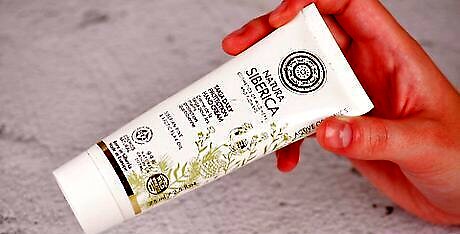
Moisturize your hands with fragrance-free creams and ointments. The most important way to treat dry fingertips is regular moisturizing, but you have to use the right moisturizer. Creams and ointments are thicker than lotion, so they’re the best options. Fragrances are irritating and could dry your skin out more, so stick with fragrance-free products. Check the ingredient list for gentle, hydrating ingredients like aloe vera, shea butter, and vitamin E. Avoid harsh ingredients like alcohol and ammonia. Moisturizers labeled as “hypoallergenic” or “for sensitive skin” shouldn’t contain fragrances or irritating ingredients. CeraVe, Eucerin, and Cetaphil are trusted brands known for their gentle moisturizers.
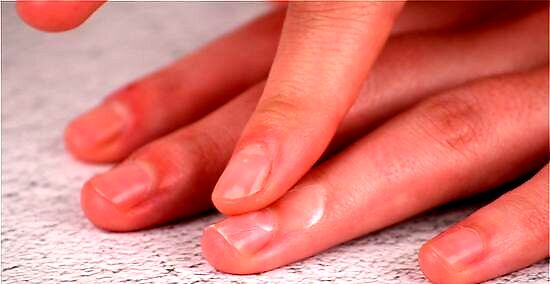
Massage moisturizer into your dampened skin several times a day. Moisturizing multiple times per day is the best way to treat dry skin. After washing your hands, bathing, or getting your hands wet, massage some moisturizer into your fingertips to lock in moisture and heal your skin. Always reapply moisturizer after washing your hands. If you're on the go a lot, carry a travel-size moisturizer with you. If you use hand sanitizer instead of washing your hands, wait for the sanitizer to dry and then apply moisturizer.
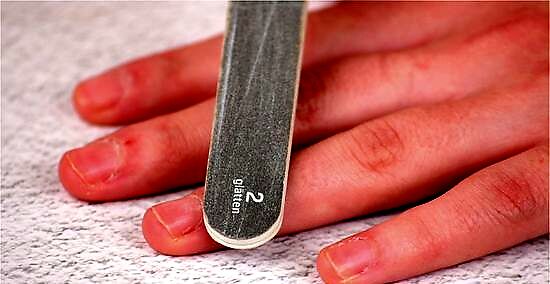
File down calluses and dry nails with an emery board. If the skin on your fingertips has become rough and thickened, use a nail file to gently smooth and soften it. This works best if you do it while your skin is still wet after bathing or washing your hands. At the same time, carefully file away any rough or brittle edges on your fingernails. Be gentle with yourself. Don’t rub so hard with the file that you irritate your skin!

Seal cracked skin with liquid bandage to prevent infection. Bacteria can make their way into cracked or broken skin if you don't seal it up. Wash and dry your hands off and squeeze some liquid bandage into the crack. Wait a few minutes for the bandage to dry fully. You can still apply moisturizer, just be sure to let the liquid bandage dry first. If you don’t have liquid bandage, cover your fingertips with small bandages to protect them. Sealing broken skin with super glue is acceptable in a pinch, but doctors generally don't recommend it.
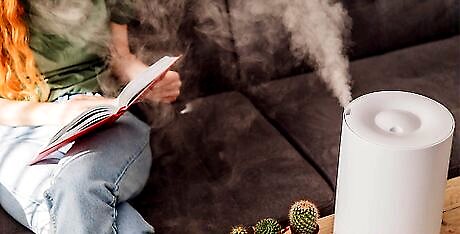
Run a humidifier in your home to keep your skin well-hydrated. Dry air can wreak havoc on your skin, especially in the winter. Running a humidifier in your home moistens the air and can help you hydrate your dry skin. If you live in an especially dry climate, you may need to run a humidifier year-round.
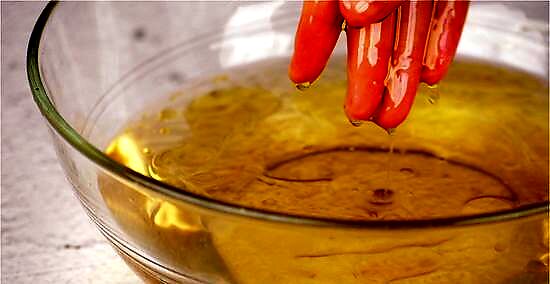
Try a vinegar and olive oil soak to balance and moisturize your skin. To make a soothing soak, mix up 2 cups (470 mL) of warm water, 1 cup (240 mL) of apple cider vinegar, and 3 tablespoons (44 mL) of olive oil in a large bowl. Soak your fingertips in the mixture for about 10 minutes, then pat your hands dry and apply your favorite moisturizer. While there’s not much scientific evidence about the skin benefits of apple cider vinegar, it may be helpful if you have a condition like eczema, which can disrupt the pH balance of your skin. Always dilute apple cider vinegar with water before soaking your hands in it. Otherwise, the acid may irritate your skin, especially if your skin is broken or cracked.

Slather your skin in petroleum jelly and put on gloves before bed. This trick can help if normal moisturizing isn’t healing your fingertips. Before bed, apply a heavy ointment like petroleum jelly to your fingertips. Then, pull on a pair of cotton gloves to protect and moisturize your skin all night. If you don’t have cotton gloves, wrap gauze or bandages around your fingertips. You can also use a gentle plant-based oil, such as sesame oil, as an alternative to petroleum jelly. Pat your hands dry after washing them, massage the oil into your fingertips, and put on gloves for at least 30 minutes to let the oil soak in.
Preventative Measures
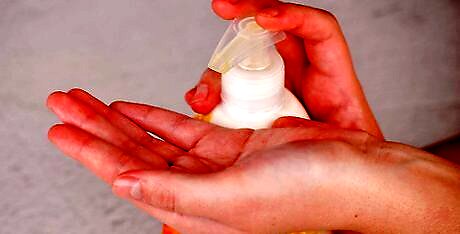
Wash your hands with gentle, fragrance-free soaps to prevent irritation. The soaps and beauty products you use could be making your skin problem worse. Use only fragrance-free soaps, lotions, perfumes, and beauty products designed for sensitive skin. Soap residue can dry out your skin, so avoid using too much and rinse off your hands thoroughly. Generally, products labelled “hypoallergenic” or “sensitive skin” are fine to use.
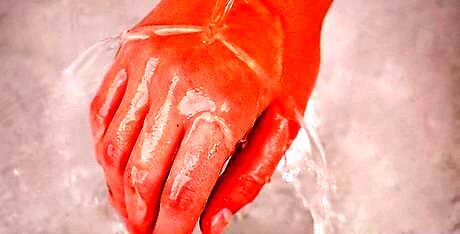
Use lukewarm water when you wash so your skin doesn't dry out. Hot water is irritating and strips moisture away from your skin, so it can be making your dry fingertips worse. Only use lukewarm water and remember afterwards to lock in moisture with a moisturizer.

Blot your hands gently when you dry them off to avoid skin irritation. Rubbing your hands with a towel can be irritating, especially if you have a condition like eczema. Whenever your hands are wet, simply blot them with a towel to dry them instead of rubbing.

Wear gloves to protect your fingers when you’re cleaning. The soaps and chemicals you use when doing the dishes, mopping, or cleaning your bathroom are all pretty harsh and can irritate your skin. Wear rubber cleaning gloves to avoid getting any chemicals on your fingers. If you’re working with tools or cleaning but not using chemicals, then wear work gloves instead. These will protect your hands from any injuries.
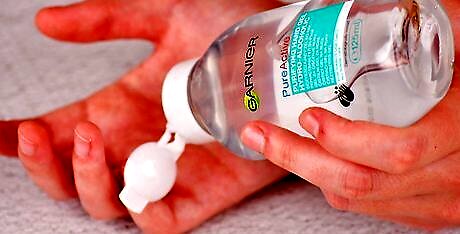
Use hand sanitizer with moisturizing ingredients to prevent dryness. Alcohol-based hand sanitizer is an approved substitute for hand-washing, but it can be very harsh on your hands. Look for sanitizers made with aloe vera and other moisturizing ingredients to protect your skin. Moisturizing hand sanitizers may not be as effective at killing germs, so try to wash your hands as soon as possible.
Potential Medical Causes
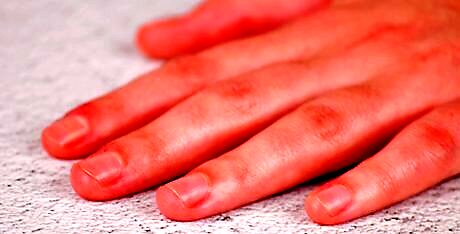
See a dermatologist if your home treatments aren't working. While moisturizing and protection is usually enough to heal dry fingertips, conditions like eczema or dermatitis may not resolve with these simple treatments. If you aren't seeing any improvement after about a week, get checked out by a dermatologist. Signs of eczema or dermatitis include rough patches of skin, peeling or blistering, redness, and pain. Your dermatologist may give you a prescription ointment or steroid cream to heal your skin.
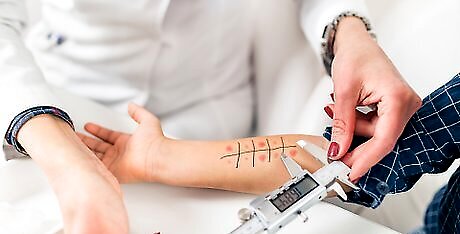
Get an allergy test to see if something is causing a reaction. In some cases, a particular allergy could cause irritation and dry skin. These often affect your fingertips because you touch a lot of things with your hands. If you aren't sure what's causing the irritation, visit a dermatologist or allergist to get an allergy test and see if this is the problem. If something always tends to irritate your skin, let the allergist know. This could be a clue for them to figure out the problem. The most common treatment for a skin allergy is avoiding whatever is causing the irritation. Keeping your skin moisturized with gentle creams can also help.

Keep your hands moisturized if you have eczema. Hand eczema isn't quite as common as other types, but it could cause dry, peeling, and flaky skin on your fingers. The best way to keep your eczema under control is regular moisturizing with a cream or ointment designed for sensitive skin. The National Eczema Association keeps a list of approved moisturizers at https://nationaleczema.org/eczema-products/about-nea-seal-of-acceptance/. Using gentle skin products is also a good way to prevent irritation. For more serious eczema cases, your doctor might prescribe a steroid cream to reduce inflammation.

Get treatment for psoriasis if it's affecting your hands. Psoriasis is an autoimmune condition at causes dry, peeling skin and red patches. It's not especially common on the hands, but it could also appear there. If you have psoriasis and it's affecting your hands, there are a few medical treatments that can help. Topical treatments like retinoids or corticosteroids are popular prescriptions to relieve psoriasis. Steroid injections may also help reduce inflammation. Light therapy has been shown to reduce irritation from psoriasis. A dermatologist holds a UV light against your affected skin to relieve redness and itching. Spending some time in sunlight could work too.
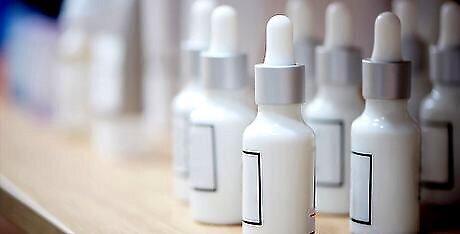
Stop applying vitamin A cream if you use it often. Vitamin A toxicity sounds like a weird condition, but it's more common than you may think. Having too much vitamin A in your system could cause skin dryness, flaking, and itching. The most common way that people get vitamin A toxicity is with overuse of vitamin A creams. If you regularly use vitamin A cream, take a break and see if that helps you feel better. You can also get vitamin A toxicity from taking too many vitamin supplements. Always follow the directions for any supplements you use, and ask your doctor to make sure they're safe.



















Comments
0 comment